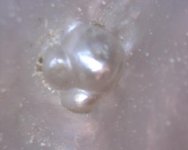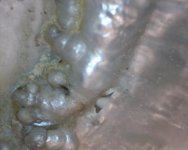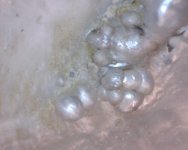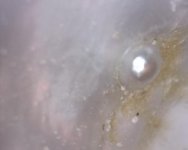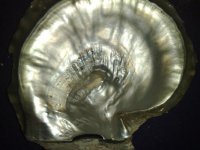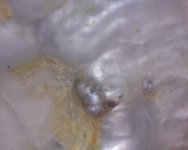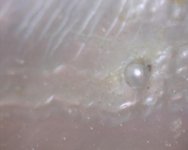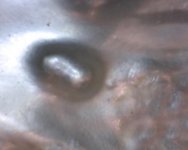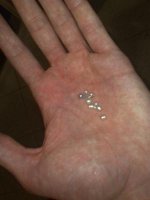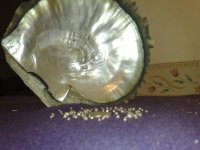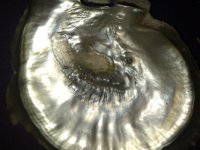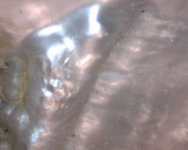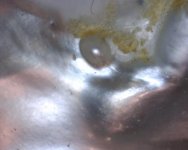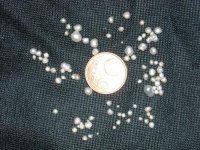Please read what happened to me:
About twenty years ago, in Hurgada on the Red Sea in Egypt, I found pearl oyster (Pinctada Margaritifera "believe" erythrensis) with 85 small pearls inside (and many more half pearls in the mantle on both valves. I have a video of the extraction of pearls from the oyster; further I have the certification with radiographs made of the pearls and shell by CISGEM - Gemmological Services and Information Centre in Milan.
I must point out that the total number of small pearls that I found was 85 but I gave one pearl to a girl, while two were lost. For this reason, the certification covers 82 "irregular ovoids" (a total of about 14 carats, equivalent to more than 55 grains), which are still in my possession. The certification speaks of pearls and calcareous concretions: these are those small groups which, while not sufficient to define stratifications such pearls, they are still composed of nacre (aragonite) as the other pearl formations.
You can see the full story in this link:
http://www.karipearls.com/discovery-of-85-natural-pearls-in-the-same-oyster.html
With links to page in Italian language.
I'm trying to figure out if my case is very rare, may be a world record for the number of pearls find in the same Pinctada and may be of interest to museums, aquariums, or private collectors.
Gianpiero Piva
About twenty years ago, in Hurgada on the Red Sea in Egypt, I found pearl oyster (Pinctada Margaritifera "believe" erythrensis) with 85 small pearls inside (and many more half pearls in the mantle on both valves. I have a video of the extraction of pearls from the oyster; further I have the certification with radiographs made of the pearls and shell by CISGEM - Gemmological Services and Information Centre in Milan.
I must point out that the total number of small pearls that I found was 85 but I gave one pearl to a girl, while two were lost. For this reason, the certification covers 82 "irregular ovoids" (a total of about 14 carats, equivalent to more than 55 grains), which are still in my possession. The certification speaks of pearls and calcareous concretions: these are those small groups which, while not sufficient to define stratifications such pearls, they are still composed of nacre (aragonite) as the other pearl formations.
You can see the full story in this link:
http://www.karipearls.com/discovery-of-85-natural-pearls-in-the-same-oyster.html
With links to page in Italian language.
I'm trying to figure out if my case is very rare, may be a world record for the number of pearls find in the same Pinctada and may be of interest to museums, aquariums, or private collectors.
Gianpiero Piva

